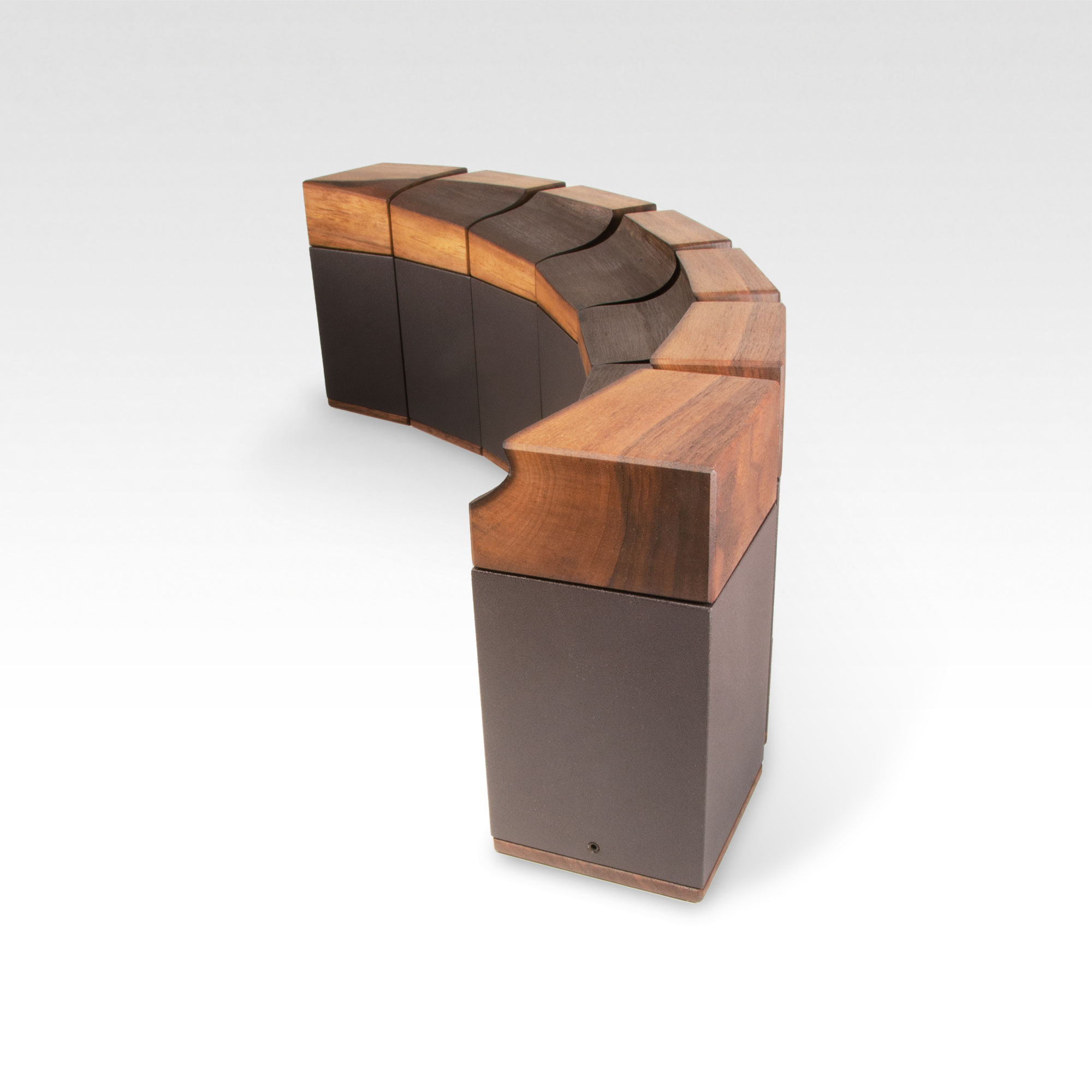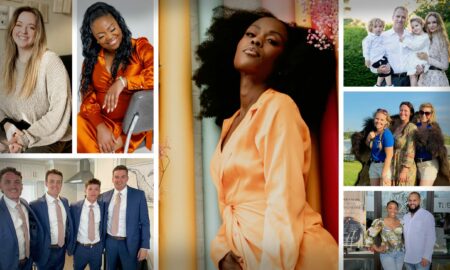

Today we’d like to introduce you to Christopher Harvan.
Hi Christopher, thanks for joining us today. We’d love for you to start by introducing yourself.
Markers and a stack of 8 1/2” x 11” paper on a rainy day in a detached garage in the late 1970s Garfield Heights, Ohio, is where I discovered where I was headed. Later, it was colored pencils and the dream of becoming an illustrator that got me to art school. Art school blew open the door to design, craft, woodworking, sculpture, papermaking, and metalsmithing. The exposure to traditional and non-traditional art history created a context for trying to find meaning and a place for my talents and efforts in society.
I found it in objects of remembrance – specifically cremation urns.
Around 2003, when my also-artist wife and I lost an unusual number of family members, we began combining her drawing with my woodworking to create assemblages that incorporated objects from the deceased’s personal belongings. We longed to make this our livelihood. We knew we would need a product line, so we began innovating in the deathcare industry.
Our products and the business we have built around them are a true hybrid resulting from the curriculum from the traditional renaissance training we received at The Cleveland Institute of Art. We consider society’s visceral response to the objects we create and what the user might experience. The appropriateness in function and aesthetics is ever present in our products while challenging accepted standards. We care not just for the quality of the build but for how the user interacts physically and emotionally. In other words, Art, Design, and Craft.
Would you say it’s been a smooth road, and if not what are some of the biggest challenges you’ve faced along the way?
The funeral industry is full of sincere, incredibly hard-working people with one of the most challenging and taxing jobs. In some ways, the industry is at odds with those people on the ground. It is definitely at odds with change of any kind.
Because of this and its self-assured dominance at the point of need, the industry has ignored consumer sentiment and avoided the consumer product revolution. Based on a survey of our customers and social circles, we estimate that 60% of people are dissatisfied with cremation urns offered by the industry. Consumers want better options, but management is sure their constituents will not pay the price of mid to top-tier quality. When funeral directors stand before their customers’ grief, knowing when and how to present options outside the standard viewbook is daunting. So, almost nobody does it because management and suppliers do not provide incentives to make it happen. We have evidence that the directors with this sensitivity can better satisfy their families.
IP theft is a significant problem within the industry. As a very small player who dared to show up with works of art and fine craft at an international funeral trade show that has gained a small but notable level of success, we became the target of mid and large-size copycats domestically and internationally. Nobody wants to pay a creative person to come up with something original. They’d instead try to steal first.
Fortunately, no other company has been able to match our quality. Most consumers cannot tell the difference online, but those who cannot are not likely to have become our customers.
Small players are regularly churned out of the business. The goal is to get picked up by a distributor so that you can make margins on volume. When you do, that buyer usually does their best to crush those margins. There is no nurturing of innovation. Only extraction.
So, despite nearly impossible circumstances, I have clawed my way to a foothold in the industry.
I am neither naturally gifted nor formally trained in sales and marketing. As a result, I have not been adept at planning for it in my business. However, I am adept at creating artwork around marketing. Finding an entrepreneurial partner to fill this role is something I would be very interested in exploring.
Can you tell our readers more about what you do and what you think sets you apart from others?
When it comes to the objects I design and build, my aesthetic would be described as Arts & Crafts/Zen/Brutalist with a flair for Art Nouveau.
I went to art school with the firm intent of becoming a Sci-Fi/Fantasy illustrator. Drawing skills were a requirement for the school I attended, and I was competent. To my surprise, I found that my greater abilities and sympathies reside in woodworking and metalsmithing. The school had a fantastic craft program but lacked a wood-focused major. My eye on becoming a Disney animator since they recruited from the school, I majored in Drawing. Somewhat open-ended, this major allowed me to make objects while minoring in metalsmithing and papermaking while pursuing fine art.
I learned how to design and code websites for a living. Craftsmanship and commitment to the user/viewer apply in this field as well. My experiences in this field have been many, and the associated learned skills have served my other ventures well.
My adventures in being a maker have had me cutting timber frame joinery and raising a hand ful of building, building custom fences, designing and building custom furniture, to now designing and building final furniture for people and pets.
This path has rarely been easy, but I am grateful to be on it. I do long for a time and opportunity to return to drawing and watercolors, but that will be only if I am able to retire.
What’s next?
I have stacks of product concepts and designs for remembrance, and I am pursuing multiple ways to bring the most of them to market.
Contact Info:
- Website: https://aril.memorial
- Instagram: https://www.instagram.com/arilmemorial/
- Facebook: https://www.facebook.com/ArilMemorial
- LinkedIn: https://www.linkedin.com/company/aril-memorial/























